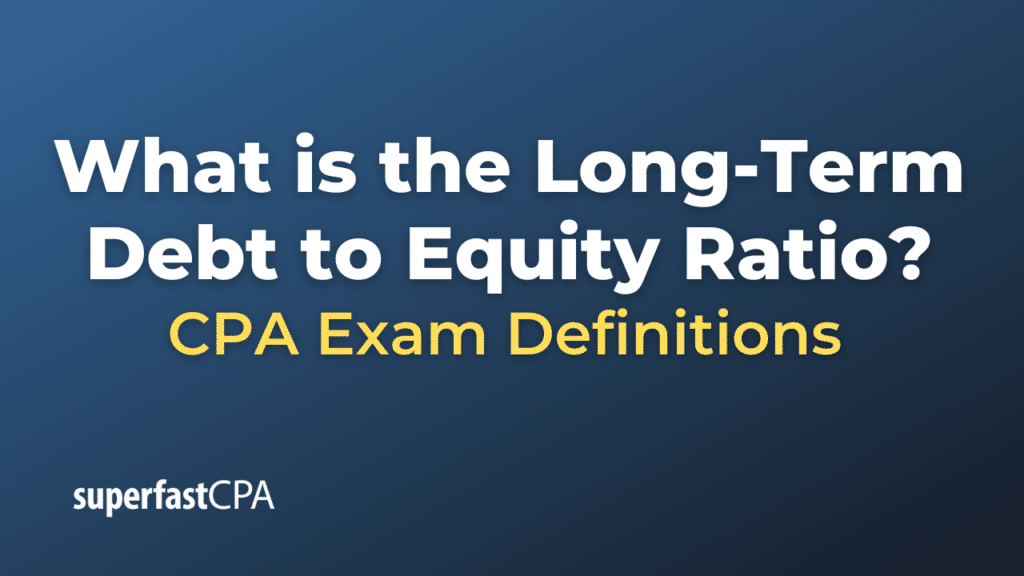Long-Term Debt to Equity Ratio
The long-term debt to equity ratio is a financial metric that measures a company’s financial leverage by comparing its long-term debt to its shareholders’ equity. It’s used to assess a company’s financial stability and its ability to meet its long-term financial obligations.
The formula to calculate this ratio is:
Long-Term Debt to Equity Ratio = Long-Term Debt / Shareholder’s Equity
Here’s what each component represents:
- Long-Term Debt: This represents the total amount of long-term debt that a company has. Long-term debt typically refers to loans and financial obligations that are due more than one year from the balance sheet date.
- Shareholder’s Equity: Also known as “stockholders’ equity” or “share capital,” this represents the net value of a company if all its assets were sold and all its debts were paid off. In other words, it’s what the shareholders would theoretically own. It can be calculated by subtracting total liabilities from total assets.
The long-term debt to equity ratio provides insight into a company’s capital structure and how much of its financing comes from debt versus equity. A higher ratio implies a company has been aggressive in financing its growth with debt, which can lead to higher risk if the company fails to meet its debt obligations. A lower ratio, on the other hand, indicates less reliance on debt in the company’s capital structure.
However, what is considered a “high” or “low” ratio can vary significantly by industry, and it’s best to compare a company’s ratio to its peers or the industry average. Moreover, it’s essential to look at this ratio as part of a broader financial analysis rather than in isolation.
Example of the Long-Term Debt to Equity Ratio
Let’s consider a fictional company, “TechCo,” to illustrate the concept of the long-term debt to equity ratio.
Suppose that at the end of the current fiscal year, TechCo reports the following on its balance sheet:
- Long-Term Debt: $5 million
- Shareholders’ Equity: $10 million
We can use these figures to calculate TechCo’s long-term debt to equity ratio:
Long-Term Debt to Equity Ratio = Long-Term Debt / Shareholder’s Equity
= $5 million / $10 million
= 0.5
This means TechCo has $0.5 of long-term debt for every $1 of shareholders’ equity. This ratio suggests that TechCo uses significantly more equity than long-term debt to finance its assets.
Now, suppose we compare TechCo to another company in the same industry, “CompCo,” which has a long-term debt to equity ratio of 1.2. This comparison suggests that CompCo relies more heavily on debt financing relative to equity compared to TechCo. This could mean CompCo is more vulnerable to changes in interest rates or economic downturns.
Remember, though, that while these ratios can provide useful insights, they should be considered alongside other financial metrics and company information for a complete picture of a company’s financial health.














